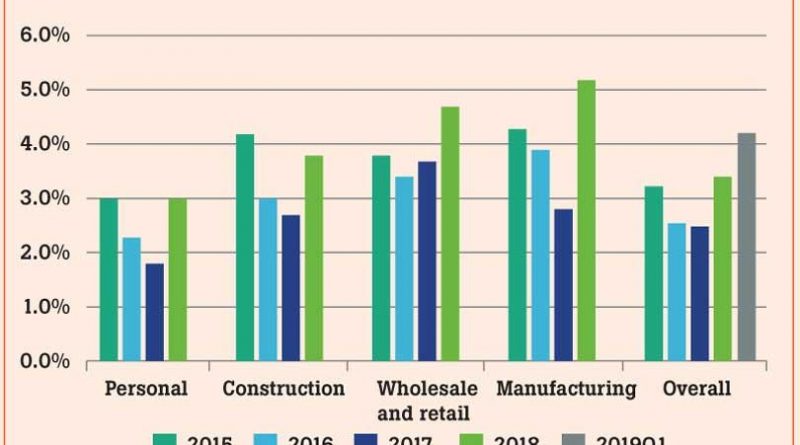Higher credit costs and taxes to put banking sector profitability under pressure: Moody’s
- Moody’s maintains negative outlook for Sri Lanka’s banking sector
- Forecasts SL’s GDP growth to slow to 2.6% in 2019 from 3.2% in 2018
- Says fundamental risks to SL’s economy remain significant given its twin deficits
Higher credit costs amid worsening asset quality and higher taxes are set to impact the profitability of Sri Lanka’s banking sector negatively, according to a new report by Moody’s Investors Service.
“ …weakening asset quality is keeping credit costs high and in turn pressuring profitability,” the report said.
“Credit costs will continue to rise from a multi-year low as asset quality weakens. In addition, credit costs will be structurally higher under SLFRS 9, which is based on a forward-looking expected credit losses model as opposed to an incurred loss approach previously,” it added. Non-performing loans (NPLs) of Sri Lankan banks have jumped since 2017 due to weather-related disruptions to the economy and a constitutional crisis in October last year.
The interest rates increases, which are now slowly coming down, have also weakened borrowers’ debt affordability.
The rating agency also pointed out that the Debt Repayment Levy (DRL), a 7 percent value-added tax on financial services that took effect in October last year, will raise the effective tax rate on the banks over 50 percent, thereby impacting their profitability.
DRL will remain until December 2021.
Moody’s maintains a negative outlook for Sri Lanka’s banking sector, which is driven by weak operating conditions and deteriorating asset quality.
“Weak economic growth will in turn result in deteriorating asset quality, also on the back of excessive credit growth in recent years,” Moody’s Analyst Tengfu Li said.
Moody’s forecasts Sri Lanka’s GDP growth to slow down to 2.6 percent in 2019 from 3.2 percent in the previous year due to the drop in tourist arrivals following the Easter Sunday attacks.
The rating agency however said the current moderated loan growth will ease funding pressure on banks while keeping their capitalization stable.
Moody’s also pointed out that fundamental risks to Sri Lanka’s economy remain significant given its twin trade and budget deficits
and the government’s higher external debt reliance.
“Political risks could also resurface, with presidential and parliamentary elections scheduled for late 2019 and 2020, and previous bouts of political instability having triggered significant capital outflows and currency depreciation,” the rating agency noted.
Finally, Moody’s expects the government’s capacity to support banks to be limited, given its large amounts of external debt and contingent liabilities.

